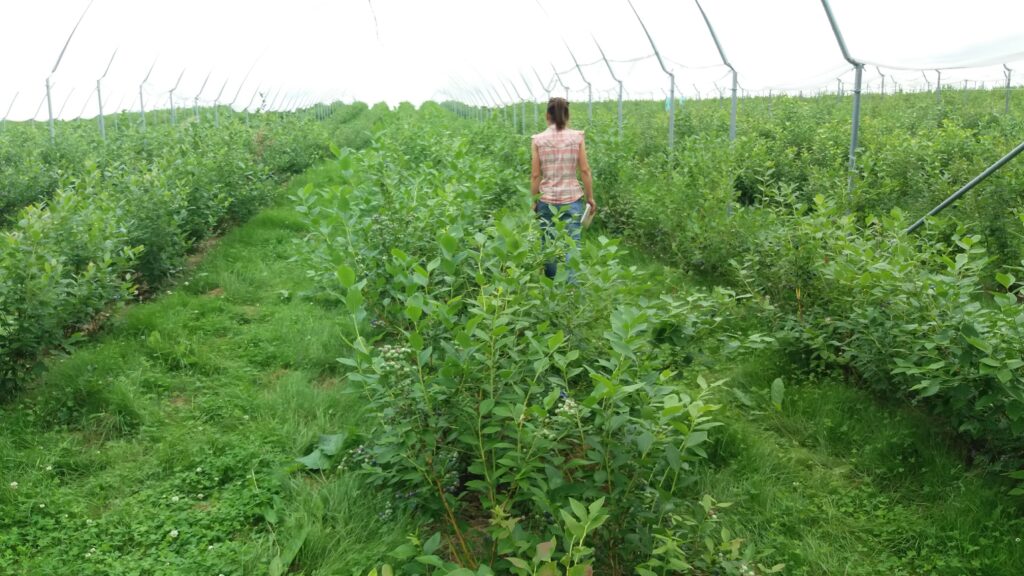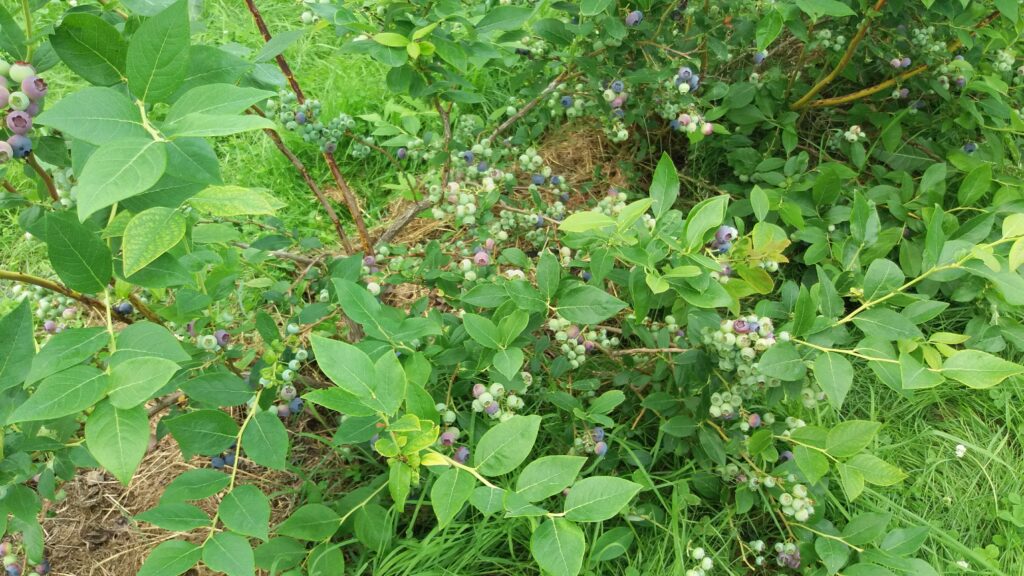CONSIDERATIONS ABOUT MYCORRHIZA IN BLUEBERRY!
CONSIDERATIONS ABOUT MYCORRHIZA IN BLUEBERRY!
If you look at it chronologically, I am already among the oldest who encountered blueberry cultivation almost half a century ago. It was at SGGW under the guidance of prof. A. Rejman and Dr. K. Pliszka when I planted the Experimental Field in Błonie near Prażmów.
The first blueberry in the Lublin region was planted by me in a field I bought in 1977, and it was from this fruit that Lubliners learned its taste. But in order for it to grow well and get mycorrhiza, I substrated it with wild Vaccinium myrtillus. The next one I planted didn’t want to grow and there was too much of it to import substrate so it was eradicated. This is how my mycorrhizal adventure began in response to a badly growing blueberry.
Preparation of a good vaccine for a given heath plant species requires, in total, many trips and searches in the best berry habitats. We do such penetrations and we have a lot of very good blueberry isolates from Poland from the sea to the mountains. We publish the excellent results of their practical applications on the company website. And yet, despite such good results, the degree of interest in our vaccines is too low. Perhaps imported is better? After all, in Croatia they only want to mycorrhise with MYKOFLOR vaccines. See effects (in polish).
I will say frankly that I cannot understand a ‘thrifty’ grower who does not apply a mycorrhizal vaccine in blueberries or cranberries. After all, heath plants anatomically require mycorrhizal fungi (Ericoid Mycorrhiza). Driving through the Grójec region recently, I saw plantations several years old that were worse than the two-year-old plantation at Ms Agata’s (click). She herself has calculated that the mycorrhization has already paid off for her in fruit yield in the second year after planting. For the record, her neighbour without mycorrhiza had already had a 30% fall out in the first year, when with her it was about 1%. This result already shows that the mycorrhizal seedling is at least 30% better from the start.
Another aspect of introducing mycorrhizae into a plantation is the saving on soil preparation. Simply with mycorrhiza we plant the shrubs without these costly treatments of acidification, peat and so on. The savings here usually exceed the cost of mycorrhiza, with no loss in yield and maybe even a better yield.
Finally, something seemingly unimportant – quality and taste of the fruit. In this era of transition to organic production, blueberries are actually an ideal candidate for this. It can be unprotected (after mycorrhisation) and even fertilised more sparingly. Our 30-year-old residual plantation has never been sprayed and is only fertilised with a small amount of ammonium sulphate in spring. Mycorrhiza takes care of the rest:
- It draws the necessary ingredients from the soil,
- Brings the pH to an appropriate (5.5),
- Increases disease and pest resistance,
- Improves taste and yield,
- Extends shelf life without loss of quality.
So many perks and little takeaways, like a beautiful maiden at a play. Something is not quite right here, or maybe there are some superstitions or fears like the virus vaccine. I really can’t understand this, because as I wrote in the company motto “Biotechnology (including mycorrhiza) is the cheapest and most sustainable form of crop intensification”. And cows also need to have microorganisms to give milk.
That would be all.
Włodzimierz Szałański
projekt i realizacja


